‘Entirely unexpected’ Roman industrial complex unearthed at Corby’s Priors Hall estate
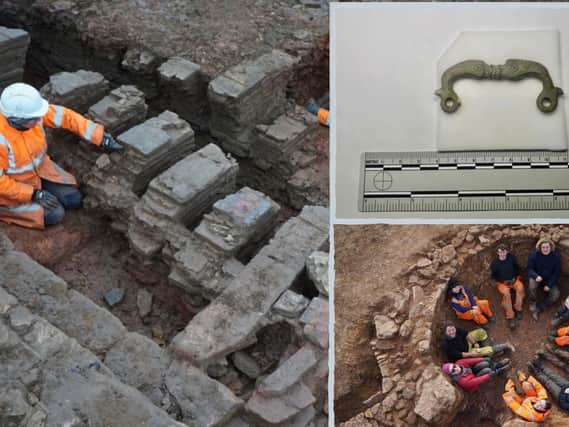

Corby’s proud industrial history is best known for its 20th century steelmaking.
But now archaeologists have made a unique discovery in the borough that could shed light on the town’s manufacturing forefathers, who lived and worked in the area 1,700 years ago.
Advertisement
Hide AdAdvertisement
Hide AdAlthough two Roman villas were already documented at Priors Hall after being excavated in the 1950s, little was known about the carpenters and builders, the tile makers and the mortar producers who worked on the large estates around the villas.
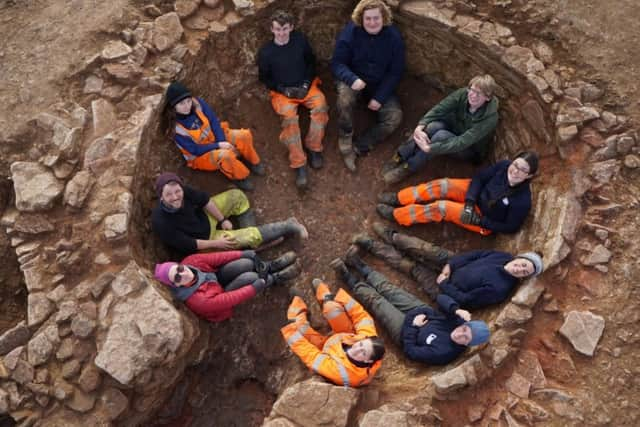

Now, their history has finally been unearthed as part of an important dig that has been going on during the past six months.
Oxford Archaeology East have undertaken the excavation of the previously-unknown, densely-populated site which paints a vibrant and detailed picture of what life was like for the town’s late Roman occupants.
The discovered two tile kilns, a lime kiln and five pottery kilns as well as large-scale quarrying facilities, along with a host of coins and intriguing artefacts.
Advertisement
Hide AdAdvertisement
Hide AdThey believe their find has the potential to illuminate Corby’s industrial history and the often-overlooked aspects of rural life during the Roman period in Britain.
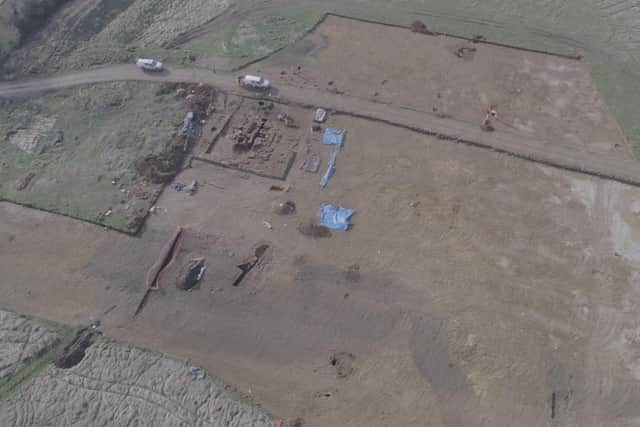

The complex dates to between the late third to middle of the fourth century AD and is set within a Roman Villa estate.
This was at the peak of the villa-building tradition, in the final century of Roman occupation, a time of economic and social turmoil within the empire.
Roman villas are usually at the heart of large farming estates, including the country house where the owner lived but also the living and working quarters for the multitude of servants and slaves.
Advertisement
Hide AdAdvertisement
Hide AdMore than 2,000 villas are known - with forty in Northamptonshire alone. Although a large proportion of villas have been excavated, the focus tends to be on the principle domestic complex.
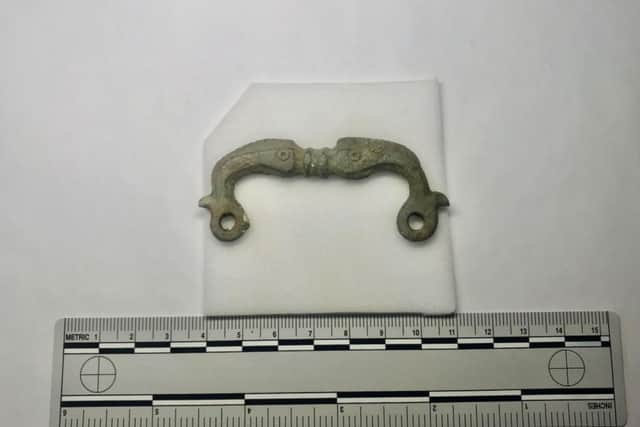

Far less is known about the sourcing and manufacturing of materials to construct them and how they operated, and less still is known about the people who built and maintained them.
The excavation at Priors Hall revealed two large tile kilns converted from an earlier structure, a large lime kiln for the production of mortar and five pottery kilns of varying sizes alongside large-scale stone and clay quarrying as well as structures, possibly for the storage of equipment.
These were linked by a metalled surface across the site to facilitate the movement of materials required to construct and operate a large Roman villa about 300 metres to the east.
Advertisement
Hide AdAdvertisement
Hide AdThe organisation and finance required to build a villa would have been considerable. The archaeology at Priors Hall shows evidence for numerous specialist tradespeople such as carpenters and builders, tile makers and mortar producers, perhaps being hired from nearby towns to make the pots, tiles, mortar and stone.
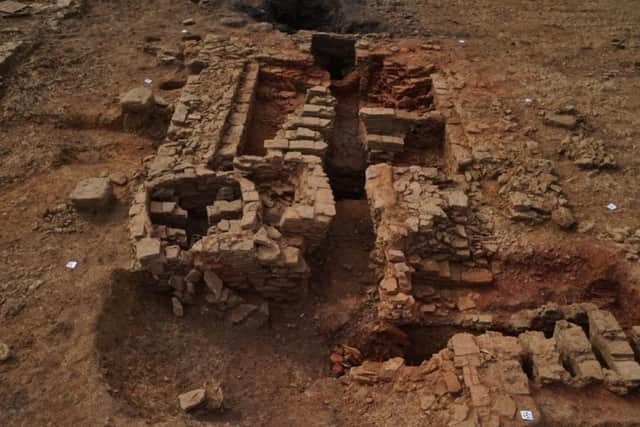

This is in addition to the back-breaking workof quarrying the stone, chopping the wood and mixing the mortar and then transporting it to where it was needed.
Nigel Wakefield, development director at Urban&Civic, which owns the site, said: ‘With two villas previously excavated on Priors Hall Park in the 1950’s, we always knew that we had a rich Roman history.
”What we didn’t realise is quite how fascinating these new discoveries are, not only in terms of the buildings that were previously here, but also in learning how they were constructed and understanding thematerials and skills required to build them
Advertisement
Hide AdAdvertisement
Hide Ad“As master developers, it is important for us to uncover and preserve this history and we're delighted with the role that Oxford Archaeology have played in this process.
“With the heritage management plan in place, we can ensure that the history is not only preserved locally, but also communicated to our residents and they can feel proud to be part of the next community living on this site.”
A decorated complete buckle made of copper-alloy and depicting two flanking dolphins representing links with the gods of the sea, Neptune and Oceanus, found on the site, displays the fashion and taste of the time.
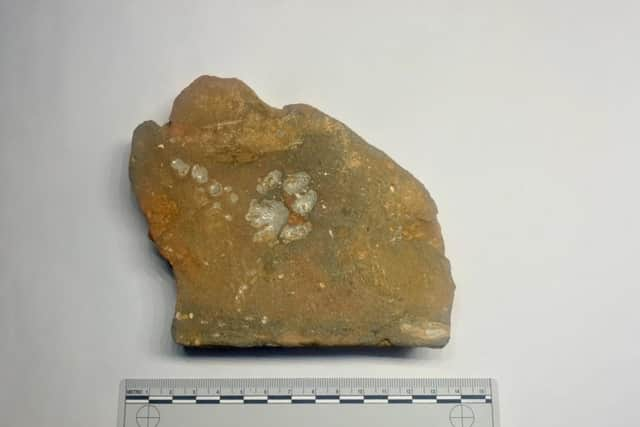

The rest of the finds include coins, animal bone, pottery and metal items, including jewellery and tools which give a rare insight into the lives of the estate workers as opposed to the villa owner.
Advertisement
Hide AdAdvertisement
Hide AdA large proportion of the coins have been ‘clipped’ - where a piece is removed in order to then make more coins or recycle the metal - which was a common activity during the later Roman period in Britain and highlights the economic problems during this turbulent time.
A particular highlight is a coin of the rebel emperor Allectus, who reigned a small breakaway empire based in Britain in AD 293 – 96.
The coin has been pierced with a single hole to make it wearable as a fashion item.
A large quantity of ceramic tiles were found, many of which had fingerprint impressions from the people who made them, as well as by animals, including dogs, deer and many cats.
Advertisement
Hide AdAdvertisement
Hide AdA tile fragment included the partial inscription of the name of the maker, likely to be a name of one of the tilers themselves immortalised in clay.
The site was excavated ahead of the next phase of development at 965-acre Priors Hall.
Developer Urban&Civic funded the work and adapted their programme to facilitate it.
The excavation was regularly monitored by Northamptonshire County Council’s archaeological advisors, who provided additional expert advice, while ensuring the work met a high standard.
Advertisement
Hide AdAdvertisement
Hide AdOxford Archaeology used innovative technology including sophisticated computer programmes to integrate accurate survey measurements with photographs to produce 3D models of the Roman structures.
These models provide a highly detailed record of each structure, which will allow for further study of them.
The firm is now washing and cataloguing finds recovered from the site, ready to be sent for specialist analysis.
A report on will be deposited with the Historic Environment Record for Northamptonshire and added to Oxford Archaeology’s online library for public access.
Advertisement
Hide AdAdvertisement
Hide AdEventually, the finds will go to the brand-new Northamptonshire Archaeological Resource Centre at Chester Farm, Irchester, which is under construction and due to open in 2021.
The discoveries will be accessible to researchers and museums, and other heritage organisations will be able to borrow material for temporary and long-term exhibitions.
Nick Gilmour, senior project manager at Oxford Archaeology said: “The great results of the excavation were only possible due to the hard work of all those involved, along with a great deal of collaboration between them.
“The field team continued with tough, and sometimes delicate, work through a cold and wet winter.”
.
Advertisement
Hide AdAdvertisement
Hide AdNCC County Archaeological Advisor Lesley-Ann Mather said: “This current phase of work is part of an ongoing scheme of archaeological resource management within the Priors Hall development area as a whole.
“Northamptonshire County Council, in their role as archaeological advisors to both Corby Borough Council and East Northamptonshire District Council have provided advice in relation to the impact of the proposed development on the known archaeological resource over a number of years.
“This has resulted in the production of a heritage management strategy and plan which covers the East Northamptonshire part of the Priors Hall Development area.
“The previous archaeological evaluations within this area had identified that archaeological activity was present, however the discovery of a Late Romano British industrial complex was entirely unexpected.
Advertisement
Hide AdAdvertisement
Hide Ad”The Roman villa complex that the industrial complex serviced is to be preserved in situ and left as grassland.
”It will be covered by a heritage management plan which will protect and manage it in the long term.
”This also includes provision for public engagement.Urban and Civic are to be commended for fully supporting Oxford Archaeology East in what turned out to be a major excavation.“